Flourishing fasciation
The heavily fasciated tall gayfeather (Liatris aspera) that we saw in Bastrop was only budding on August 23rd, so back we went on September 6th to find out what the flowers would look like once they emerged on this distorted plant. Even after two more weeks of development, the flowers were just barely beginning to come out, so I figured we might have to wait a week or two longer and make the 95-mile round trip yet again. Fortunately, as we began heading home we spotted another fasciated specimen about a mile away, and it was fully flowering. In the picture above, the flower stalk in the distance lets you compare a normal specimen to the fasciated one in the foreground. The picture below gives you a closer look at the heart of the strangeness.
For more information about fasciation, you can read this article or this other one. The phenomenon could even serve as a reminder of Ralph Waldo Emerson’s iconoclastic statement in “Self-Reliance“:
“Whoso would be a man, must be a nonconformist.”
© 2020 Steven Schwartzman


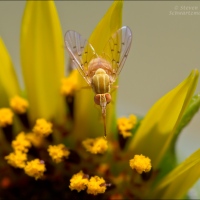
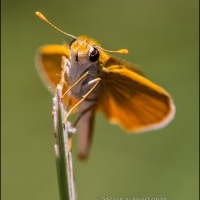
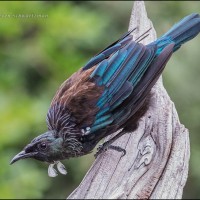
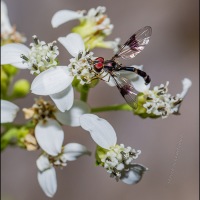
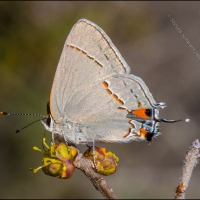
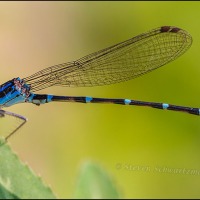

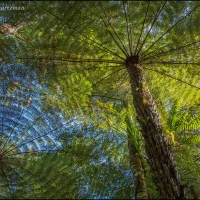

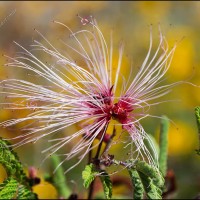
“Fasciation” was a new term for me, and I see that it’s a relatively-rare condition of abnormal growth (a mutation) in vascular plants that causes an abnormal number of flowers on a stem or deformed flowers. I can’t help but notice the similarity to fascia, which is the sheet of connective tissue beneath the skin that attaches, stabilizes, encloses, and separates muscles and other internal organs. Fascinating, I dare say.
krikitarts
September 19, 2020 at 5:10 AM
Not long after I got interested in native plants two decades ago, the leader of a field trip drew our attention to a fasciated poverty weed plant, and I believe that’s where I first learned about the phenomenon. This blog is in its tenth year, and that may be how many times I’ve shown fasciation here—enough that I started using a “fasciation” tag for relevant posts; you can click that tag, which is just below the “likes,” if you want to see other examples I’ve shown. In my early posts about fasciation I provided more explanation, along with external links, on the assumption that many readers would be unfamiliar with the phenomenon or the name for it. I just went back and added a couple of links at the end of this post’s text.
Steve Schwartzman
September 19, 2020 at 5:33 AM
Thanks for the reminder to check further through your tag. I’m sure I’ve seen a few examples through the years, but apparently never realized what they were, I will be much more aware and on the alert now.
krikitarts
September 20, 2020 at 2:57 AM
You know what they say: “Be a lert. The world needs more lerts.”
Steve Schwartzman
September 20, 2020 at 4:16 AM
No, I did not know that they say that, but it doesn’t matter, because I’m too busy just trying to be a ware.
krikitarts
September 21, 2020 at 3:43 AM
That’s what it’s all a bout.
Steve Schwartzman
September 21, 2020 at 4:14 AM
Yup, when we do the hootchie-kootchie and we turn ourselves a round.
krikitarts
September 21, 2020 at 4:42 AM
Mahalo for capturing odd
Yoli
September 19, 2020 at 5:52 AM
I’m glad to give a nod
To something that’s so odd.
Steve Schwartzman
September 19, 2020 at 6:00 AM
My first thought on studying this fasciated tall gayfeather was that it appeared as the form of a skinny coyote pup’s face, most notably the pointy ears. The pose would indicate the pup stopped to catch scent, sniffing skyward, in its search for prey. I like that you included “normal” stalks in the background to compare.
I dug up my white sweet potatoes yesterday, and thanks to learning about fasciated plants here on your blog, I determined one of the plant vines fasciated – flattened out about an inch wide and a foot long in the middle of the vine. It was interesting to note that this particular plant also produced the three largest sweet potatoes I dug up this year! So hooray for fasciated plants!
Littlesundog
September 19, 2020 at 6:34 AM
We could categorize your first paragraph as “pareidolia comes to fasciation.” For people not familiar with this species or even Liatris in general, having a normal flower stalk to compare to makes the strangeness of the fasciated one stand out all the more.
Your mention of fasciated sweet potato vines is the first time I’ve known anyone to experience fasciation in a plant grown for food. Now the question is whether the fasciation in any way caused those three sweet potatoes to be the largest, or whether that was merely a coincidence. We’d need data about the results of fasciation in other plants grown for food.
Steve Schwartzman
September 19, 2020 at 7:25 AM
I love reading your posts!
I always learn something interesting about the world.
Thank you 🙂 🌼
My Small Surrenders
September 19, 2020 at 8:16 AM
You’re welcome. So much is out there to see and learn about. Any one person can know about only a tiny part of it all.
Steve Schwartzman
September 19, 2020 at 8:35 AM
An interesting find, Steve. I’ve run into that here, once with tree lilies and once with sunflowers.
Lavinia Ross
September 19, 2020 at 9:22 AM
I’m glad you’ve had some personal experiences with fasciation. As many sunflowers as we have in central Texas, I don’t recall ever coming across a fasciated one. Maybe someday….
Steve Schwartzman
September 19, 2020 at 1:27 PM
Have the wildflowers affected you?
Steve Schwartzman
September 19, 2020 at 4:52 PM
Your dedication to wildflowers is truly amazing, Steve. To make a 95-mile roundtrip to photograph the flowering development of a gayfeather or any other plant is not done by too many people including myself. I am impressed.
Peter Klopp
September 19, 2020 at 9:42 AM
I am dedicated, it’s true. The sights and the pictures of them make it worthwhile. We did the round trip to Bastrop three times this season; I don’t know if a fourth is still in the offing.
Steve Schwartzman
September 19, 2020 at 4:55 PM
Some call it strange, some wild, others self-reliant.
tanjabrittonwriter
September 19, 2020 at 10:36 PM
Another word for it is individualistic. That notion has become anathema in certain quarters.
Steve Schwartzman
September 20, 2020 at 3:54 AM
What I thought was fasciation on my goldenrods was actually a midge gall. I’d be happier if it was what your Liatris is exhibiting.
Steve Gingold
September 21, 2020 at 3:23 AM
I had a similar experience a couple of months ago: what I initially thought was fasciation on a Mexican hat turned out to be some kind of long, woody gall. I don’t think I’ve ever seen a fasciated goldenrod.
Steve Schwartzman
September 21, 2020 at 4:12 AM
At first, I couldn’t figure out why this example of fasciation seemed especially odd. Then, I realized it’s that ‘branch’ extending out from the main stem. I’ve seen the thickening and banding often enough to think of them as the primary signs of fasciation, but clearly there are variations. It’s great that you were able to position this with normal stems in the background for comparison; it makes the fasciation even more striking.
I think I have a photo of a Liatris with a middle portion of the stem fasciated. I’ll post it as soon as I get a round tuit. Stay a lert for the post.
shoreacres
September 21, 2020 at 9:34 AM
When it comes to posting, a round tuit keeps a blog rolling along better than a square tuit.
As for this fasciated plant, the non-linearity is a key feature, as evidenced by that “branch.”
Steve Schwartzman
September 21, 2020 at 9:44 AM
Really interesting Steve .. I really enjoy your journeys and finds
Julie@frogpondfarm
September 25, 2020 at 3:13 PM
So do I!
Have you found any fasciated plants on your property?
Steve Schwartzman
September 25, 2020 at 3:27 PM
You know Steve, I’m not sure .. but I will keep my eye out from now on 🙂
Julie@frogpondfarm
September 25, 2020 at 3:43 PM
Happy hunting.
Steve Schwartzman
September 25, 2020 at 3:47 PM